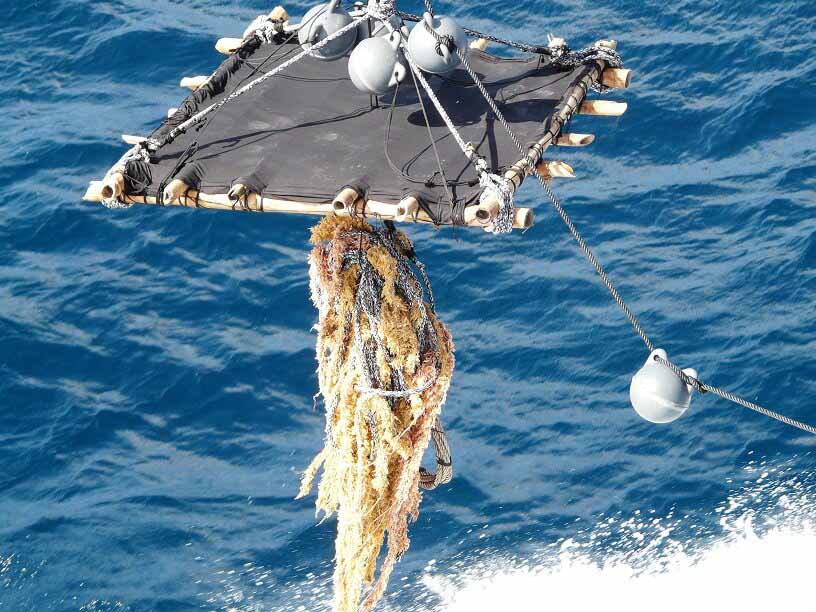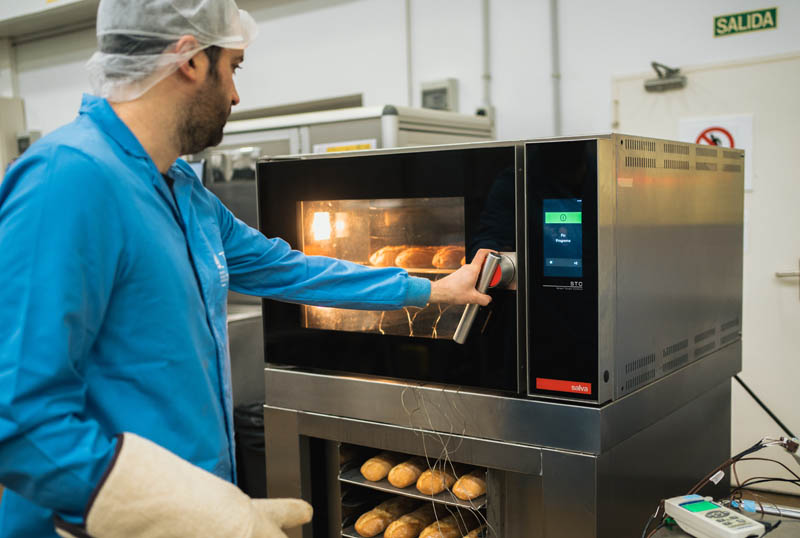Towards safer and more marine ecosystem-friendly tuna fishing
Últimas noticias
Una mirada LGTBIQ+ al reino animal
Circular Economy in Action: Valorisation of By-products through Projects like PRIMA NEWFEED
Strategic Perspectives: Highlights from the Food4Future World Summit for Business Leaders
- AZTI has coordinated a European project that has permitted evaluating fish aggregating devices constructed with biodegradable and non-entangling materials, in real marine conditions.
- The research has taken place in the Indian Ocean, where 771 devices were deployed in the fishery operational areas of the tropical tuna PS fleet.
Pasaia, May 4, 2020.- The development of fishing solutions that are more respectful with marine species and the environment is a key element to guarantee sustainability of the fisheries sector, an activity area of great economic and nutritional importance.
More than half the world’s catches of tropical tuna species (skipjack, yellowfin and bigeye tunas) originate from fishing with Fish Aggregating Devices (FAD). The use of these artificial objects that float on the sea surface has increased considerably over the last few years, leading to the establishment of management measures aimed at restricting their impact on tuna populations. It has also become necessary to evaluate the consequences that these devices may have on the marine ecosystem.
AZTI technology centre, member of the BRTA Alliance, is working on the design and implementation of less invasive fishing methods for the marine ecosystem. The European project, BIOFAD, falls within the framework of these efforts. This is an initiative that has consisted of trials with FAD made of biodegradable materials, which reduce unwanted catches.
“Fishing with traditional FAD devices causes unwanted impacts on the marine ecosystem, as their non-biodegradable design generates waste in the sea. Further, the use of entangling materials causes the entrapment of other accessory species, such as sharks and sea turtles in the nets, with the subsequent cost for the environment”, Iker Zudaire, project leader at AZTI, ensures.
To revert this scenario, the technology centre has tested new prototypes of devices that take the name of the initiative, BIOFAD, in open sea.These devices have been made using biodegradable materials, and they have been specifically designed so that marine animals, which are not targeted by the fishing activity, cannot be accidentally caught.
“In the initiative, we have worked on the design of BIOFAD prototypes and we have examined them in large-scale trials in the Indian Ocean, in tuna fishing activities. Moreover, we have assessed their efficiency in terms of catch, presence and aggregation of tuna, and we have analysed the socio-economic impacts associated with their use in the tropical tuna purse seine fishery in the Indian Ocean”, Zudaire adds.
The main conclusion of the project, driven by the European Union, is that the BIOFAD devices are just as useful for fishing as traditional FADs, and that they present positive aspects such as the good functioning of some of the biodegradable materials used and the significant reduction of synthetic material.The negative aspect is their high manufacturing cost.
The BIOFAD project is led by AZTI and has the collaboration of the Spanish Oceanographic Institute (Spanish acronym IEO), and the French public scientific research body, IRD. Likewise, the project has the collaboration of the International Seafood Sustainability Foundation (ISSF) and the industry, with the participation of the European and Seychelles tuna purse seine fleets associated to ANABAC, OPAGAC and ORTHONGEL, and also the Korean fleet.

Índice de contenidos
A project in several phases
La primera fase del proyecto consistió en examinar los diferentes dispositivos utilizados en la pesca de cerco del atún a través de la medición de parámetros como su uso, su desarrollo y el impacto generado. Los dispositivos estudiados fueron los FAD convencionales (es decir, enmallantes y no biodegradables), los NEFAD (no enmallantes, pero no biodegradables) y, finalmente los BIOFAD (no enmallantes y biodegradables).
The first phase of the project consisted of examining the different devices used in the tuna purse seine fishery by measuring parameters such as their use, development and the impact generated. The devices studied were traditional FADs (that is, entangling and non-biodegradable), NEFADs (non-entangling, but not biodegradable), and finally BIOFADs (non-entangling and biodegradable).
The analysis described the different types of FADs according to the risks of unwanted catches. Finally, a summary was presented, including previous and current research studies relating to biodegradable materials and NEFADs carried out worldwide.
Secondly, the material was selected as well as the most adequate design to construct the BIOFADs targeted by the project. The advantages and disadvantages of different biodegradable materials and designs were assessed at different workshops, characterising tested BIOFAD prototypes in terms of type and amount of material used.
“The degradation of materials such as cotton canvas and two types of resistant cotton ropes were assessed to identify the pros and cons of each of these materials. The results showed a relatively good performance of cotton ropes while the cotton canvas did not meet the performance expected by the fleet”, Zudaire specifies.
The new BIOFADs were defined, based on the specifications of the materials used, and a large-scale BIOFAD deployment strategy at open sea was defined in order to obtain the necessary data to perform a robust analysis. Finally, 771 BIOFAD were deployed during the project, covering the areas of the Western Indian Ocean where the tropical tuna PS fleet operates throughout the year.
Thirdly, the BIOFAD behaviour and performance were evaluated in comparison with NEFADs currently used by the tuna PS fleet, considering aspects such as tuna catches, device occupation percentages, and tuna biomass aggregation indices to estimate daily aggregation, among others.
“Tuna was first detected at around 35 days in both FAD types. Occupation ratios were higher in NEFADs than in BIOFADs. Overall, tuna biomass estimation did not show remarkable differences between the two FAD types”, says the expert.
Regarding the lifespan of BIOFADs and NEFADS, both devices showed a maximum lifespan longer than year (maximum lifespan for a BIOFAD of 483 days and for a NEFAD of 493 days). Impacts in terms of carbon footprint and marine aquatic ecotoxicity were also assessed for each BIOFAD and NEFAD prototype.
“The results in the prototypes indicated, as one would expect, that the more material used in a FAD, the higher its environmental impact score. The option of doubling material use (i.e., double canvas or double metallic frame) permitted by the Consortium in order to extend the lifespan of the FADs, consequently and significantly increased their environmental impact, both in terms of carbon footprint and marine ecotoxicity”, Zudaire specifies.
Socio-economic impact
Furthermore, the socio-economic impacts of replacing NEFADS with BIOFADs were assessed, including an analysis of the possible costs and benefits of the replacement process in the EU tropical tuna PS fleet. This analysis considered the implementation of these new BIOFADs in the short- and long-term. For that, several scenarios were tested depending on the possible fish price premium due to the use of BIOFADs, and on the difference in catchability according to the type of FAD.
“The maximum drop in revenues for replacing NEFADs with BIOFADs was 12%, when there was no price premium, and the catchability of BIOFADs was much lower than for NEFADs. But in the event of there being a price premium of 10%, and if the catchability of the BIOFADs were equal to that of the NEFADs, revenues could increase by 10%”, the expert ensures.
The job creation potential linked to the production of BIOFADs was also explored. “On average, labour costs derived from component replacements, increased from 24% to 34% when using BIOFADs, and therefore, employment levels would also increase”, the AZTI researcher concludes.
ALL THE INFORMATION ABOUT THE RESULTS HERE







